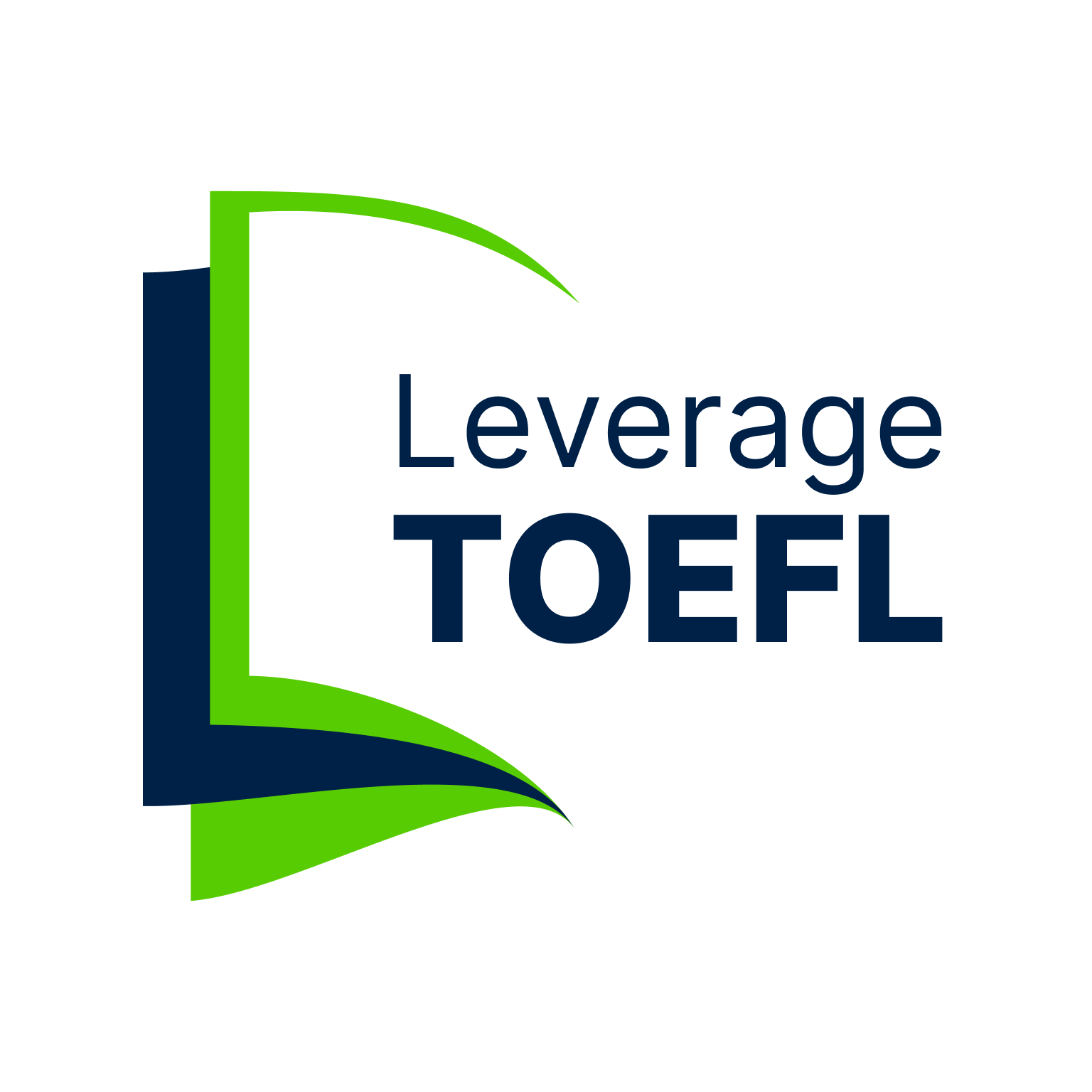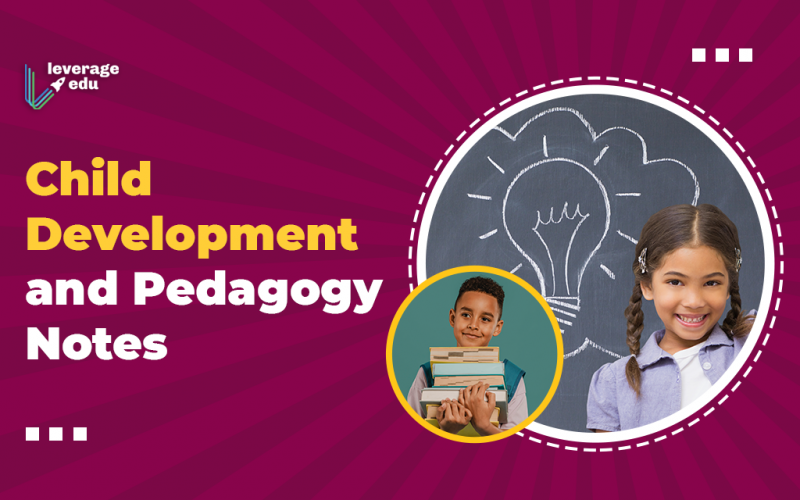Child Development and Pedagogy are the important sections of the Central Teacher Eligibility Test (CTET). It is important to understand this section to score well on the exam. We are here to provide you with notes on child development and pedagogy. So let us get started!
Child psychology is the discipline of psychology that investigates children’s behaviour and consciousness from infancy to puberty. Child psychology addresses not only the physical development of children, but also their psychological, social, and emotional development. Understanding the physiological and biological changes that occur in students requires an understanding of child development and education.
| CTET Exam Highlights: | ||
| Particulars | CTET Paper 1 Highlight | CTET Paper 2 Highlight |
| Exam mode | Online | Online |
| Number of subjects/sections | 5 | 4 |
| Names of subjects | Child Development and Pedagogy, Language, Mathematics and Science or Social Studies/Social Science | Child Development and Pedagogy, Language II, Mathematics and Science or Social Studies/Social Science |
| Duration of exam | 2.5 hours (150 minutes) | 2.5 hours (150 minutes) |
| Total Questions | 150 | 150 |
This Blog Includes:
- Child Psychology
- Development & its Characteristics
- Intelligence
- The Principle of Child Development
- Types of Children’s Strategies for Learning
- Exam Pattern for CTET Child Development & Pedagogy Section
- Child Development & Pedagogy Well-Versed Syllabus
- Important Topics of Child Development & Pedagogy (CTET)
- Child Development and Pedagogy Reference Books
- How to Prepare for Child Development and Pedagogy Section?
- Important Questions and Answers
- FAQs
Child Psychology
Child Psychology is an important branch of psychology that focuses on the mind and behaviour of children from parental development through adolescence. Child psychology deals not only with the growth of children physically but also with their mental, emotional and social development as well.
Development & its Characteristics
Development refers to the biological and psychological changes that occur in human beings between conception and the end of adolescence, as the individual progresses from dependency to increasing autonomy. It may also be defined as a process of the internal features of a human being in collaboration with external or environmental features.
- Development is a continuous process-It does not occur in spurts. Growth continues from conception until an individual reaches maturity.
- It follows a pattern or sequence-Every species, whether animal or human, follows a pattern of growth.
- General to specific-It moves from generalised to localized behaviour. Growth occurs from large muscle movements to more refined (smaller) muscle movements.
- Different rates of individual growth and development-Neither all the parts of the body grow at the same time, nor do the mental abilities of a child develop fully. They attain maturity at different paces.
- Development is a complex phenomenon. All the aspects of growth are closely interrelated with each other.
Intelligence
According to the subject Child Development and Pedagogy, Intelligence is the ability to learn about, learn from, understand and interact with one’s environment. It includes various specific abilities such as –
- Adaptability to a new environment.
- Capacity for reason and abstract thought.
- Ability to comprehend relationships.
- Capacity for original and productive thought.
- Ability to evaluate and judge.
Using Multiple Intelligences in the Classrooms
The theory states that all these are needed to productively function in society and teachers should structure the presentation of material in such a style that could engage most or all of the intelligence.
The Principle of Child Development
With the help of the given child development and pedagogy principles, we can easily identify how children are developing and at which stage they are.
- Principle of Cephalo-Caudal- Development proceeds from head to toe (e.g., coordination of arms before legs in infants 6–12 months).
- Proximal-Distal-Development progresses from the centre of the body outward (e.g., spinal cord develops first, then limbs).
- Simple to Complex- Mental and verbal abilities progress from simple to complex.For example, if the child must learn to classify the objects so that the kite and aeroplane may be the same for her because they both fly in the sky. But in the later stage of learning, they will be able to understand more complex similarities and differences between these objects.
- Continuous Process Principle: Skills accumulate continuously (e.g., language development from babbling to full speech).
- General to Specific Principle: Large muscle movements develop first, then finer motor skills.
- Individual Rates of Growth and Development- Everyone is different, that’s why their rates are too. That’s why there should be no such notion as the average child, because everyone proceeds according to their own rates. So, we can’t compare two children on the basis of their intellectual development or one child’s progress with another.
- Cephalocaudal Principle: Development proceeds from head to toe (e.g., coordination of arms before legs in infants 6–12 months).
- Proximal-Distal Principle: Development progresses from the centre of the body outward (e.g., the spinal cord develops first, then the limbs).
Types of Children’s Strategies for Learning
Types of Children’s Strategies for Learning come under Child Development and Pedagogy. It includes strategies like:
- No School Bag: In the initial years of schooling, children feel hesitant to go to school because of the new environment and because of heavy bags. Nowadays, many schools have adopted the policy of no school bags. This is basically done in order to attract kids to school on a regular basis and develop the learning of regularity among kids.
- Organising a Competition for Reading and Writing: This strategy of learning is helpful for 3rd-grade to 5th-grade students because of the proper development of reading and writing skills. This helps in developing the learning of reading and writing.
- Organising Play Competition: This strategy of learning is basically part of a co-curricular activity, when the child gets exposure to the outside world.
- Daily sharing of News: The teacher, to develop a habit of listening to news and reading newspapers from a small age, only.
- Organising Outdoor Activities: Teachers can organise small trips or picnics to museums, parks, etc.
Autocratic Teaching Strategy
This strategy uses traditional methods of teaching. In this method, the teacher has full control over teaching and students are not allowed to act freely. This strategy is of four types:
- Storytelling Method: Under this method, the teacher delivers the content in a story form to the students. This method increases the vocabulary of the student and enhances their vocabulary.
- Lecture Method: The lecture method is the oldest and one-way communication method of teaching and is helpful in developing the cognitive and affective domains of the child.
- Demonstration method: This method is useful in teaching a practical subject where the content can be understood by only showing.
- Tutorial Method: Under this method, a class is divided into groups according to the capacities of students. Each group is handled by different teachers.
Democratic Teaching Strategy
The Democratic Teaching Strategy is a vital part of Child Development and Pedagogy notes for CTET. Under this strategy, a child is free to express their views in front of the teacher and maximum interaction between teachers takes place. Here, the teacher works as a guide or instructor. Six types of methods are covered under this strategy:
- Discussion Method: Under this method, a conversation about a topic takes place between students and teachers. The discussion method develops the thinking and communication power, which results in the development of a higher level of the cognitive and affective domains. This method is suited to all subjects teaching except maths, art, music, and dance.
- Heuristic Method: Under this method, a teacher raises a problem in front of the student and also guides him. The students can solve the problem after gaining knowledge through self-study, self-learning, investigation and research.
- Discovery Method: Under this method, students find the solution to their problems in their own surrounding environment.
- Project method: Under this method, a project related to real-life experiences is assigned to students by making a group. Students learn and solve real-life problems with each other’s cooperation.
- Role-playing Method: Under this method, roles are assigned to students and students are allowed to play those roles.
- Brainstorming: It is a creative method of teaching under which a number of ideas are generated for the solution of a specific problem.
Also Read: How to Become a Teacher?
Exam Pattern for CTET Child Development & Pedagogy Section
The exam is held for 2 hours and 20 minutes for each paper. There is no negative marking, and the paper is held in the MCQ format. The app is available in English, Hindi, and other regional languages as per CTET guidelines.
| Paper | Total Questions | Weightage by Unit |
| Paper I (Classes I–V) | 30 Questions / 30 Marks | 1. Child Development (15 Questions) 2. Inclusive Education & Special Needs (5 Questions) 3. Learning & Pedagogy (10 Questions) |
| Paper II (Classes VI–VIII) | 30 Questions / 30 Marks | 1. Child Development (Major share) 2. Inclusive Education & Special Needs (Few questions) 3. Learning & Pedagogy (Significant weightage) |
Child Development & Pedagogy Well-Versed Syllabus
After knowing and getting familiar with the exam pattern, another CTET preparation tip that aspirants must adhere to is getting familiar with the correct syllabus and marking scheme of the CTET exam. Candidates must know that the CTET Syllabus is different for Paper – I & Paper II. Hence, aspirants must try to cover the complete CTET syllabus.
| Unit / Section | Topics Covered |
| Child Development | 1. Concept of development and its relation with learning 2. Principles of child development 3. Influence of heredity and environment 4. Socialization processes: role of family, teachers, and peers 5. Theories of development: Piaget, Kohlberg, Vygotsky, Erikson 6. Child-centred and progressive education 7. Intelligence: concept, multiple dimensions, assessment 8. Language and thought 9. Gender as a social construct, gender roles and bias 10. Individual differences among learners (language, caste, culture, community, etc.) 11. Assessment in education: assessment for learning vs. assessment of learning 12. School-based assessment, CCE, formative and summative evaluation 13. Formulating questions to assess readiness, learning, critical thinking and achievement |
| Inclusive Education & Special Needs | 1. Addressing learners from diverse and disadvantaged backgrounds 2. Understanding learning difficulties and impairments 3. Approaches for specially-abled children 4. Strategies for gifted and talented learners |
| Learning & Pedagogy | 1. How children learn and reasons for success or failure 2. Basic processes of teaching and learning 3. Learner strategies and learning as a social activity 4. Child as problem solver and investigator 5. Understanding errors as part of the learning process 6. Cognition and emotions 7. Motivation in learning 8. Factors affecting learning: personal and environmental |
Important Topics of Child Development & Pedagogy (CTET)
Here are some of the important topics under child development and pedagogy that you need to prepare for the CTET exam. These areas cover theories, principles, and applications that form the backbone of teaching aptitude. The table below highlights the key topics and subtopics you can use for preparation.
| S.No | Topic | Subtopics |
| 1 | Growth & Development | Principles of growth, influencing factors (biological, environmental, cultural), and stages from infancy to adolescence |
| 2 | Cognitive & Moral Development | Piaget’s stages, Vygotsky (ZPD, scaffolding), Kohlberg’s moral stages, Erikson’s psychosocial stages |
| 3 | Intelligence & Theories | IQ, EQ, Gardner’s Multiple Intelligences, intelligence measurement and tests |
| 4 | Language Development | Chomsky’s LAD, Vygotsky’s role of interaction, language acquisition challenges |
| 5 | Learning Theories | Behaviourist (Pavlov, Skinner), Thorndike’s laws, Gestalt theory, Bruner’s constructivism |
| 6 | Learning Disabilities & Special Needs | Dyslexia, dyscalculia, ADHD, Autism, inclusive education strategies |
| 7 | Motivation & Personality | Maslow’s hierarchy of needs, reinforcement & punishment, Freud’s personality theory, role of emotions |
| 8 | Heredity & Environment | Influence of heredity, home, peers, socio-cultural factors |
| 9 | Gender Issues in Education | Gender as a social construct, bias in classrooms, strategies for equality |
| 10 | Assessment & Evaluation | Formative vs Summative, CCE, school-based assessment, types of questions |
| 11 | Policy & Curriculum Framework | NCF 2005, RTE 2009, Govt. initiatives for inclusive education |
| 12 | Psychologists & Contributions | Piaget, Vygotsky, Kohlberg, Bruner, Thorndike, Skinner, Gestalt school |
Also Read: Application for School Teacher Job: Format and Samples
Child Development and Pedagogy Reference Books
To gear up for the above-mentioned topics, you must have the necessary reference books to save precious time on researching every topic separately. Here is the list of prominent books on Child Development and Pedagogy that you need to have while preparing for teaching exams such as CTET:
| S.No | Child Development and Pedagogy Books | Authors |
| 1 | Child Development & Pedagogy for CTET & STET (Paper 1 and 2) 2nd Edition | Shalini Punjabi |
| 2 | Wiley’s Child Development and Pedagogy Exam Goalpost for CTET & STET (Paper 1 and 2), Class I- VIII | DT Editorial Services |
| 3 | A Complete Resource for CTET: Child Development and Pedagogy | Sandeep Kumar |
| 4 | Thought and Language | Lev Vygotsky |
| 5 | PRAGYA’s Child Development and Pedagogy: CDP for CTET | N.K. Ullah |
| 6 | CTET and TETs Child Development and Pedagogy Paper 1 and 2 | Arihant Experts |
Also Read: Additional Books for CTET preparation
How to Prepare for Child Development and Pedagogy Section?
Here are a few essential tips that candidates must keep in mind at the time of preparation for the Child Development and Pedagogy section. These tips will help you to prepare well for the CTET 2025.
- Students must have a thorough understanding of the syllabus: The key to success in the Child Development and Pedagogy section of the CTET exam is to have a complete understanding of the syllabus and pattern.
- Students are advised to study each topic minutely under the syllabus to have an understanding of the basic concepts of each section.
- Students can practice CTET question papers to test themselves. This will help them gain confidence in the section. There are many papers and mock tests available for Child Development and Pedagogy questions.
- Another important tip is to not leave any questions blank. The marking scheme prescribed for CTET 2022 indicates one mark for every correct answer without any negative marking in the exam.
Important Questions and Answers
Now that you know the basics of this concept, we have curated a list of some of the important practice questions on Child Development and Pedagogy.
| 1. As a teacher who firmly believes in the social constructivist theory of Lev Vygotsky, which of the following methods would you prefer for assessing your students? (a) Collaborative projects (b) Standardized tests (c) Fact-based recall questions (d) Objective multiple-choice type questions 2. According to NCF, 2005, the role of a teacher has to be- (a) Authoritative (b) Permissive (c) Dictatorial (d) Facilitative 3. Research suggests that in a diverse classroom, a teacher’s expectations from her students,_____ their learning. (a) Have a significant impact on (b) Are the sole determinant of (c) Should not be correlated with (d) Do not have any effect on 4. Inclusion of children with special needs: (a) Is an unrealistic goal (b) Is detrimental to children without special needs (c) Will increase the burden on schools (d) Requires a change in attitude, content and approach to teaching. 5. A teacher can enhance effective learning in her elementary classroom by: (a) Offering rewards for small steps in learning (b) Encouraging competition among students (c) Drill and practice (d) Connecting the content to the lives of the students 6. Primary school children will learn most effectively in an atmosphere: (a) Where their emotional needs are met and they feel they are valued (b) Where they are mostly happy and playing games (c) Where the teacher is authoritative and clearly dictates what should be done (d) Where the focus is only on mastering primarily cognitive skills of reading, writing and mathematics 7. Which of the following is the most effective method to encourage conceptual development in students? (a) New concepts need to be understood on their own without any reference or help (b) Give students multiple examples and encourage them to use logic (c) Replace the students’ incorrect ideas with correct ones by asking them to memorize (d) Imposing your own views and ideas on the students and eliminating theirs 8. A child sees a crow flying past the window and says, “ A bird”. What does this suggest about the child’s thinking? A. The child has previously stored memories B. The child has developed the concept of a ‘bird’ C. The child has developed some tools of language to communicate his experience(a) A and B (b) B and C (c) A, B and C (d) Only B 9. The cephalocaudal principle of development explains how development proceeds from: (a) General to specific functions (b) Differentiated to integrated functions (c) Rural to urban areas (d) Head to toe 10. A 5-year-old girl talks to herself while trying to fold a T-Shirt. Which of the following statements is correct in the context of the behaviour displayed? (a) Jean Piaget and Lev Vygotsky would explain this as the egocentric nature of the child’s thoughts. (b) Jean Piaget would explain this as egocentric speech, while Lev Vygotsky would explain this as the child’s attempt to regulate her actions through personal speech. (c) Jean Piaget and Lev Vygotsky would explain this as the child’s attempt to imitate her parents (d) Jean Piaget would explain this as social interaction, while Lev Vygotsky would explain this as an exploration. Answer Key The answer key to the above questions is listed below: 1. a 2.d 3. a 4. d 5. d 6. a 7. b 8. c 9. d 10. b |
Child Development and Pedagogy is an important section of the CTET examination. It not only tests your developmental theories but also your understanding of inclusive education, and effective teaching and assessment strategies. Proper practice with MCQs, understanding the exam pattern, and referring to the right study materials will strengthen your preparation and boost your confidence.
FAQs
That set of instructional approaches and strategies that enable learning to occur and give opportunities for the acquisition of knowledge, skills, attitudes, and dispositions within a specific social and material context is called child pedagogy.
The 5 stages of child development include the following stages.
1. Newborn (birth to 3 months), infant (3 to 12 months),
2. Toddler (1 to 3 years), preschool (3 to 5 years),
3. School-age (5 to 12 years),
4. Adolescence (12 to 18 years).
During these stages, children go through physical, cognitive, language, emotional, and social development.
The 5 main areas of child development are cognitive development, social and emotional development, speech and language development, fine motor skill development, and gross motor skill development.
Start from the NCERT books from class I to VIII and perform well. Solve all problems in the Science books from 6th to 8th grade. There will be pedagogy questions as well as practical problem-solving questions. Complete the practice questions in the CTET online test series and sample papers.
This was all about child development and pedagogy notes for the CTET exam. Hope this helps you to crack the exam. If you have any doubts, do let us know. We will help you! All the best! For more educational blogs and fun quizzes, follow the study abroad experts at Leverage Edu. You can connect with us on Facebook, Instagram, Twitter and Linkedin.
Related Articles:

 One app for all your study abroad needs
One app for all your study abroad needs





















 45,000+ students trusted us with their dreams. Take the first step today!
45,000+ students trusted us with their dreams. Take the first step today!


